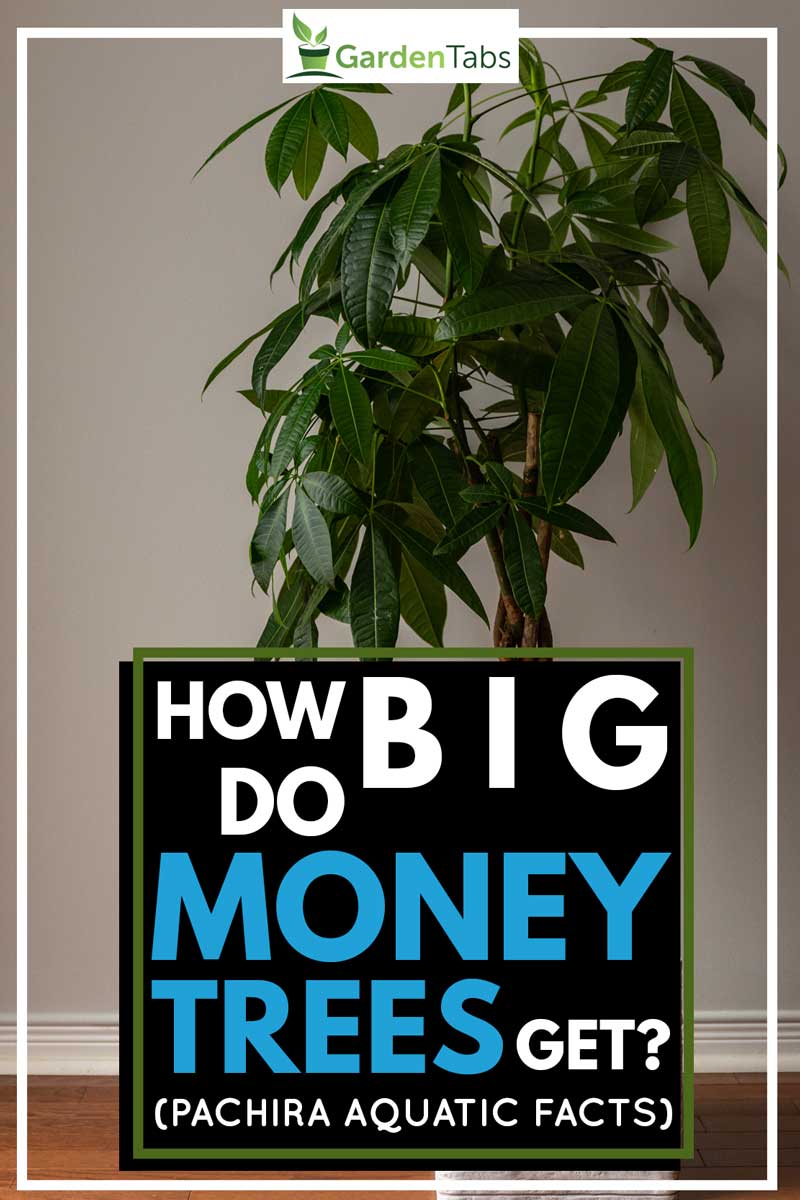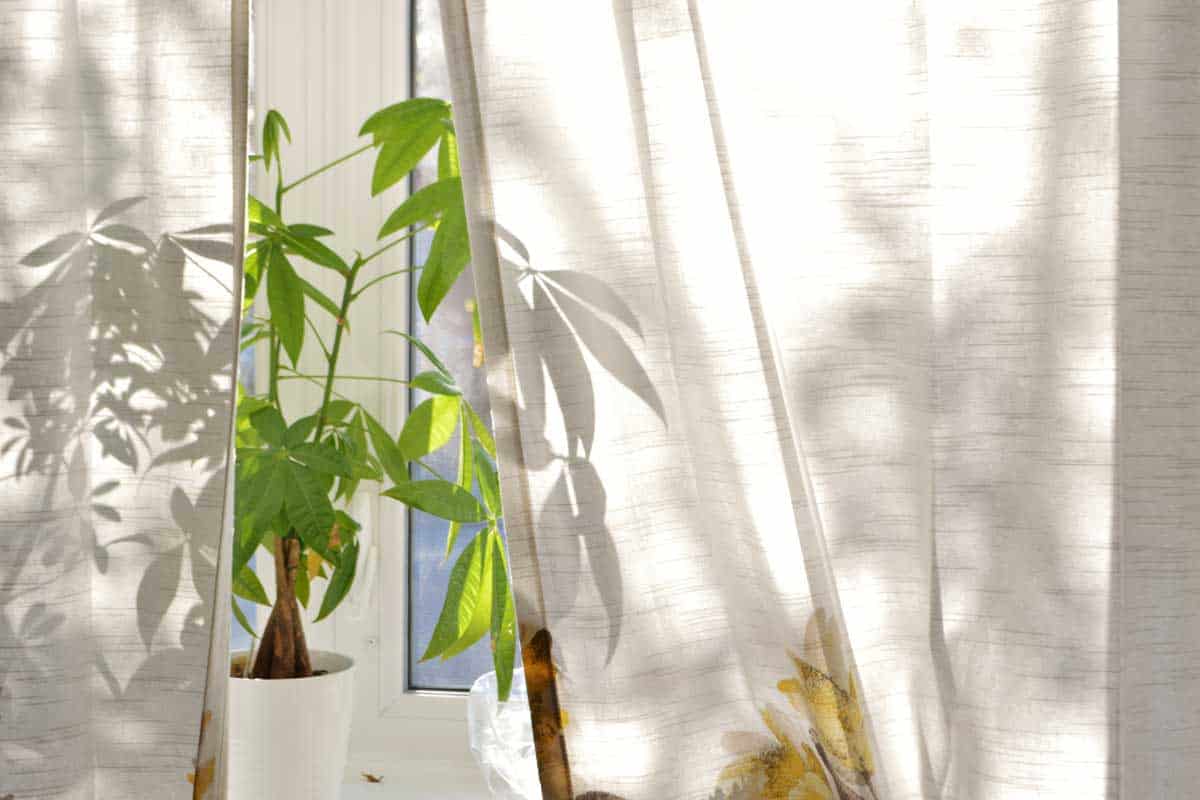 Who says money doesn't grow on trees? The money tree, or Good Luck Tree, has long found its way into all manner of homes. If you're thinking about bringing a money tree into your home - either for good luck, financial gain or for appearance's sake - you'll need to have a bit of information under your belt, including how big they get. We have researched this critical question so you can make the right decision for your home.
Who says money doesn't grow on trees? The money tree, or Good Luck Tree, has long found its way into all manner of homes. If you're thinking about bringing a money tree into your home - either for good luck, financial gain or for appearance's sake - you'll need to have a bit of information under your belt, including how big they get. We have researched this critical question so you can make the right decision for your home.
When they grow in the wild, money trees can grow to be up to sixty feet tall. When they're kept in the home, these trees tend to cap their height at six feet.
How do you keep these trees at a reasonable height in the home, though? Let's dive into the basic care and keeping so you can make the most out of your money tree.
How Big Do Money Trees Get?
As previously mentioned, when grown outdoors, Money trees can grow up to sixty feet tall. This would make them very poor house plants if they did not respond as well as they do to constant pruning and the restrictions of growing in pots indoors. A carefully tended money tree can easily be maintained at heights around six feet tall.
How Long Does It Take For Money Trees To Grow?
Money trees do not grow exceptionally quickly. Trees that are kept outdoors will grow unimpeded, so long as you do not actively trim its branches. Cultivated money trees, comparatively, will grow more slowly than their cousins. More often than not, the trunks of these trees are braided by those that sell them, further stunting their growth. Once you start trimming and pinching your tree, you'll be able to keep it at your preferred height for as long as you own it.
On average, you'll need to trim your money tree once a week to keep it at your preferred height.
How Do You Shape A Money Tree?
If you want to keep your money tree in miniature, you're going to need to trim and pinch it. The practice of trimming and pinching helps you shape your money tree into your preferred shape, meaning that you can create fascinating patterns out of the many branches and offshoots.
To trim the tree, you'll need a sharp pair of shears. Once your tree grows to your preferred height, you can start to trim away any new growths that start to appear. Don't remove all of the new growth you see on your tree, of course, as you'll want to continue shaping it. You should, however, trim back what looks to be excessive.
The practice of pinching requires you to pinch the branches of the tree that you want to stop growing. Do so gently but firmly to see the best results.
Braiding, finally, needs to be done when your money tree is still young. If you're growing your money tree from a seed or sapling, you'll need to carefully weave the branches or trunk offshoots together into your desired pattern.
Should You Trim A Money Tree?

If you don't want to trim your money tree, you don't have to. However, money trees can grow to exceptional heights if left untended. If you want to keep your money tree at a reasonable size, then you'll need to trim it at least once a week. Without that trimming, the tree will continue to grow until its height is no longer easily manageable.
How Many Leaves Are Lucky On A Money Tree?
There's more to the money tree than a little extra beauty in your home. Money trees, as mentioned, contribute to the feng shui of a room and the balance of your home. They're also said to bring additional financial luck. If you notice seven leaf-stems growing off of your money tree, it may be time to take a financial risk. Like a four-leaf clover, a seven-leafed growth on a money tree is considered lucky.
Do Money Trees Grow Better Indoors or Outdoors?
As mentioned, money trees can thrive indoors and outdoors. In both circumstances, money trees thrive when exposed to a lot of light, between five and eight hours per day. They also thrive in moderate-to-high humidity, as their native habitat is relatively damp. When they're outdoors, they can grow to exceptional heights, coming to nearly sixty feet in height. They remain as hardy as ever, withstanding fluctuations in the weather without browning or failing to grow taller.
Indoors, money trees are more frequently tended to than they are outdoors. As a result, they'll be much shorter and a little more sensitive to changes in the environment. Where, though, do these trees grow best?
A money tree's growth and health will all depend on the way you treat it. You can cultivate these trees both indoors and outdoors, and so long as you balance their exposure to light, water, and fertilizer, you should be able to enjoy them - for their balance or beautification - for a long time.
Best Products For Money Tree Care
While you won't need a new set of tools to care for your money tree, there are a few things you should have on hand. The best money tree tool kit includes:
Money Tree Shears
Scissor-like shears are excellent tools for new money tree owners. These shears will give you more control as you trim your tree and won't take much adjusting to get used to.
You can find these shears through Amazon.
Pruning Shears
If you're interested in a more specialized shear, you'll want to invest in a pair of small pruning shears.
You can find specialized pruning shears through Amazon.
6-Inch Tree Trays
You're also going to need a pot into which you can transfer your money tree growth. Trays that have six inches of depth are ideal for new money trees and will help you house your tree until it's grown to a larger size.
You can find these trays through Amazon.
Indoor Plant Fertilizer
As mentioned, it will be best for you to dilute your fertilizer when first using it on your money tree. That said, it's still good to have some on hand to perk up the soil if it needs help.
You can find fertilizer for your money tree on Amazon.
So, think you're ready to bring a money tree into your home? Give it a whirl - thanks to the tree's hardy nature, you should be able to pinch, trim, and shape to your heart's desire.




